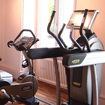Should & Shouldn't
Elementary level
Description
Materials
Main Aims
-
To provide clarification & practice of should and shouldn't are for advice in the context of health.
Subsidiary Aims
-
To provide specific information listening practice using a text about staying healthy in the context of should and shouldn't. To give ss practice in semi-controlled speaking through giving advice about health.
Procedure (35-45 minutes)
Ss will focus on the photo. Ask where My Taylor is (at the doctor's) and if the ss think he's healthy. Why? /Why not? Listen to recording R10.1 Check answers with partner. Ask ss if they understand the phrase give up (smoking) stop smoking. Check answers with the class. Read HO1 exercise 1. Advice- opinion that someone gives you about the best thing to do in a particular situation. Listen again.R10.1 and answer questions. Check with partner. W/B write 1-6 and answers.
On W/B write Good & Bad. Ask Ss to talk with partner what is good thing to do or bad thing to do? Example 'Exercise' is good 'Smoking' is bad. Elicit some ideas and complete the chart by ss. ICQ why the things are bad and good. Ask ss-What does the doctor say about...red meat and pizzas, exercise..... 'You.....' We use should/shouldn't to give advice. e.g. You shouldn't eat so much red meat. And you should do more exercise. On W/B choose the correct words in the 'rules' and fill the gap. You should eat healthy food. s + should + V1 (bare infinitive) Check answers with the class. On W/B do some practice using phrases What should I do?, I don't think you should.
a) Focus on the photo of Mr Taylor at the doctor's and tell students that the doctor gave Mr Taylor more advice. HO1-Exercise 2. Show example to ss and ask ss to complete filling in gaps with should/shouldn't.Check in pairs. Check answers wıth the class. b) R10.2 Play recording and drill the sentences. Should is not stressed but shouldn't is stressed as it is a negative auxiliary. Drill. Check pronunciation: Should /ʃʊd/ Shouldn’t /ʃʊdənt/ c) Tell students to write three more pieces of advice for Mr Taylor. Then compare sentences in pairs.e.g. He shouldn't eat pasta and rice. He should drink a lot of water. Monitor and check sentences for accuracy.Ask ss to share couple of answers.
Put ss into groups A,B,C. Tell ss to read the problems that they have. Check with your partner to check for understanding. Then write one more problem. Monitor and help with problems. Put ss into groups of three, ss A, ss B, ss C, and take turns asking and giving advice. Ask ss to share the best piece of advice for one of the problem in the class.

